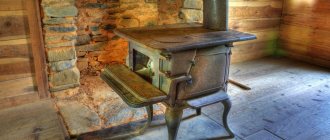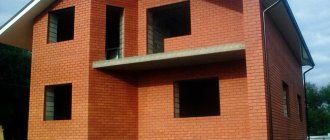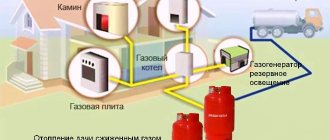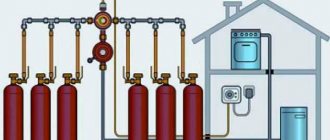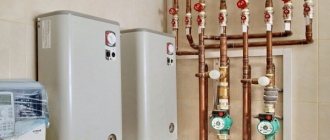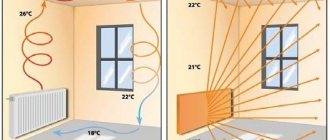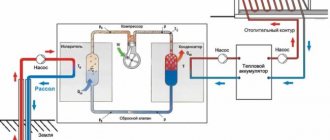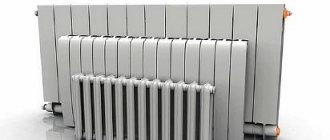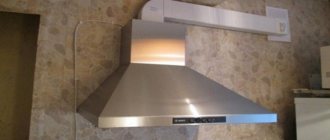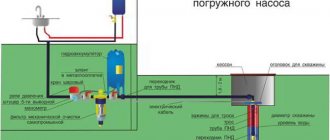A wood-burning stove is an alternative heating option for a private home or bathhouse, which will help heat the room in case of an emergency power or gas outage. What parameters should you pay attention to when choosing a device?
On design and power, size and heated area, as well as ease of use and maintenance.
We analyzed information on purchases of wood-burning stoves in Russia in 2021, and compiled a rating of the best models based on reviews from users and experts.
Also, when selecting models, official test data from Rostest were taken into account, so the rating included only the best devices in terms of price/quality ratio.
Stove heating is still relevant
Despite the fact that now there are many ways to heat your home, a stove for heating a home does not lose its relevance. Beautifully made of brick, lined with stone or decorative tiles, the stove perfectly complements the interior of the house. A cast iron stove or fireplace also fits perfectly into the overall interior. Many people cannot even imagine their home without a good Russian stove. After all, how nice it is to warm up near the stove in winter, especially since there will always be a place where you can dry your shoes and clothes. Therefore, stoves have always been popular and will remain so for many years to come.
Important requirements that stove heating meets:
- fire safety;
- low consumption of fuel resources;
- duration of fuel combustion;
- ease of maintenance;
- heats up very quickly and at the same time retains heat for a long time and transfers it to the room.
Modern technologies are penetrating all industries - certain changes have also affected the furnace industry. Modern furnaces can be equipped in such a way that they can serve as a heating tank and a generator of electricity from fuel combustion. Many are designed in such a way that one stack of firewood is enough to maintain combustion for a long time.
Modern long-burning wood stove Source volgospas.ru
When is it profitable to burn with wood?
It’s good when there is a gas main within reach of a country house. In this case, the question of choice does not arise for most owners; If wood heating is present, it is for comfort, in the form of a fireplace or a small decorative stove. If there is nothing to connect to and the house is large, the best choice would be a solid or liquid fuel boiler, since electric heating will cost much more and can only be considered as an additional (backup) option.
It’s another matter if the country house is small in area. For a building with two or three rooms and a kitchen, the number of heating methods is greater, but the most common is still the use of wood. In country cottages, wood heating is beneficial in the following cases:
- Seasonality of residence. Heating with wood is especially beneficial if people do not live in the house permanently, but use it for seasonal recreation. Even if there is a gas main nearby, it is not always cost-effective to carry gas.
Wall-mounted method of arranging a modern wood-burning stove for heating a house Source kamine-streubel.de
- Availability of fuel. If there are no problems with the procurement of firewood in the area, heating with wood will be the most economical way for a house of any size.
- Modern design. For a small house, a modern, economical wood-burning stove and well-designed heating will be the best solution.
Stove heating of a private house
There are a huge variety of stove options. Here are just a few of them:
- cast iron stoves for heating;
- cast iron stoves for heating and cooking;
- cast iron stoves based on fireplace design;
- brick kilns "Shvedka";
- brick ovens for heating and cooking food;
- Russian stoves;
- brick fireplace stoves;
- Dutch brick stoves.
All these types have their advantages and disadvantages. Each stove for heating a home is good in its own way. Below is an example of a classic brick oven.
A carefully made stove will perfectly complement the interior of the house Source zen.yandex.ru
Advantages of the stove heating method
In order to understand the need to install a stove for heating a private home, you need to know a number of its advantages:
- absolute autonomy of operation and independence from external factors, such as turning off water, gas or electricity;
- brickwork can warm a room for a long time , even if the fire in the firebox has already gone out;
- simultaneously with heating the rooms, the stove can be used for cooking ;
- cost-effectiveness in terms of purchasing fuel and the need to pay bills for the general supply of gas, electricity and water, availability of firewood, compared to peat or coal;
- absence of overheated and dry air;
- just a pleasant atmosphere in the house;
- Ease of operation: no high-tech electronic equipment required.
The advantage of a brick oven is that it can be designed according to your wishes and preferences Source pinterest.com
Disadvantages of stove heating
Along with the advantages, stoves also have negative qualities.
- Sufficiently long heating time . This happens because bricks take a long time to heat up.
- A certain amount of usable space is lost , since the larger the house, the larger the stove will have to be installed.
- Heavy weight . If the stove is very large, you will have to build a separate foundation for it.
- Uneven heating of all rooms, that is, the further the room is from the stove, the more time it will take to heat it; warm air will reach it last.
What is taken into account when choosing
Choosing which stove to install is not so easy. Stoves are made of brick and metal. Usually cast iron is used as a metal: it holds heat the longest.
When choosing the dimensions of the furnace, its shape, and material, several factors should be taken into account:
- Number of heated rooms . For one or two rooms, a small metal stove is sufficient. For larger houses with more rooms, a brick oven should be installed. It can be supplemented with a water circuit that stretches through all the rooms. This option allows you to increase the efficiency of the stove, as well as heat all rooms more quickly and efficiently.
An example of the location of a stove in a small one-story house Source lestorg32.ru
- Dimensions of the room . It is logical to assume that a large brick stove will simply take up the entire space of a small room.
- The type of fuel on which the future furnace will operate. It can be gas, firewood, peat, coal. Combined devices are often used, but they have their own design and this must be taken into account.
In the old days, stoves were installed in the center of the house. They went out on each side into all the rooms, heating each of them. Massive stoves take a very long time to cool down, so after lighting you can be sure that all rooms will be heated. During installation, you will need to additionally cut a hole in the roof for the pipe to exit. In general, a place for a stove should be laid out at the stage of building a house. A well-chosen location is the key to effective use of the stove’s functionality, because it can not only heat, but also cook.
When designing a house, you can plan the location of the stove and design a pipeline for heating distant rooms and heating water Source luchtepla.ru
When choosing a stove for a country house, you will have to think through the following points:
- where the stove will be installed;
- what size will it be;
- how the chimney will exit: through the wall or through the roof;
- if the stove is brick, you will have to cut through the floor and prepare an additional foundation for it;
- provide fire safety measures;
A flooring made of non-combustible material is always installed near the stove. Source rmnt.mirtesen.ru
See also: Catalog of companies that specialize in insulating houses and installing fireplaces and stoves.
Review of long-burning stoves
Choosing a heating device is a subjective process. It is necessary to independently determine what tasks the solid fuel device should solve - heating, cooking, equipping a bathhouse, water heating equipment, etc. Our rating includes boilers, stoves, fireplaces, long-burning heating devices of industrial and handicraft production for private houses, summer houses, baths, saunas, utility rooms, etc., which enjoy the greatest success among users.
Stoker 100-C (Ermak)
Long-burning heating stove Stoker 100-S, made in Russia (Kirov) is a device with high convection characteristics and additional capabilities, designed for heating a country house, cottage, and other residential and commercial facilities. An analogue of the presented device, but without glass, is the Ermak-thermo 100 long-burning stove.
Characteristics:
- room volume – up to 100 cubic meters. m;
- Efficiency – 75%;
- power – 6 kW;
- fuel – firewood, pellets;
- material – structural steel;
- burning time (fuel consumption) – up to 12 hours (about 2.4 kg/h);
- hob – yes (with burner);
- ash pan - yes;
- combustion adjustment – coarse and fine.
Advantages:
- transparent door with SCHOTT ROBAX glass;
- directional heat exchange system (convection);
- soft infrared radiation;
- the possibility of optionally using a heat accumulator and heat exchanger to supply hot water;
- affordable price.
Flaws:
- quick cooling of the device in the basic configuration.
Application area:
residential, utility and domestic premises.
Approximate price:
from 14,000 rub.
MBS Vesta
The MBS Vesta gas generator stove made in Serbia is one of the most popular long-burning stoves and fireplaces on the market. A special feature of the model is its modern design and the ability to choose a device with a color of the side surfaces that matches the interior (burgundy, cream, red).
Characteristics:
- The volume of the heated room is up to 60 cubic meters. m;
- power – 9 kW;
- Efficiency – 85%;
- fuel – fuel briquettes, firewood;
- material – cast iron, enameled steel;
- fuel consumption – about 3 kg per hour;
- hob – solid (cast iron);
- ash pan – yes (retractable);
- combustion control is precise.
Advantages:
- heat-resistant glass SCHOTT ROBAX (Germany);
- design;
- tightness;
- movable cast iron grate.
Flaws:
- relatively high fuel consumption;
- price.
Application area:
country houses.
Approximate price:
from 32,000 rub.
Week KO-60
The automatic long-burning boiler Nedelka for water heating (Russia) is so named because of its ability to function under certain conditions for 6-7, and in some cases up to 9 days, without human intervention. Nedelka is heated with coal of any type and quality.
Characteristics:
- heated room area – up to 400 sq. m;
- power – 60 kW;
- Efficiency – up to 92%;
- fuel - coal;
- material – steel;
- burning time for a heated area of 100 sq. m – up to 6 days;
- hob – no;
- loading and cleaning system – yes;
- combustion control is automatic.
Advantages:
- service life – over 20 years;
- reliability;
- imported automation;
- absence of moving parts in the design;
- safety – in case of power failure it goes out slowly;
- long period between lighting and cleaning.
Flaws:
- difficulty in installation;
- high price.
Application area:
residential buildings, buildings with office and industrial premises.
Approximate price:
from 126,500 rub.
SUPRA Gotham
The first Supra fireboxes (France) appeared on the market back in 1878. Since then, the company has not changed its profile, accumulating experience in the development and production of heating systems. Today you can purchase Supra fireplace stoves and other long-burning fireboxes in both traditional and modern styles. SUPRA Gotham wall-mounted stoves are suitable for any living space. They effectively provide heating, create coziness and comfort.
Characteristics:
- room volume – up to 200 cubic meters. m;
- power – 14 kW;
- Efficiency – 78%;
- fuel - wood;
- material – cast iron (cladding – metal);
- burning time – up to 10 hours;
- hob – no;
- Ash pan - yes.
Advantages:
- effective “clean glass” system;
- design;
- possibility of installation at a short distance from the wall (35 cm);
- reliability;
- durability;
- quality that meets the French standard Quality Charter “Flamme Verte 2009” (carbon monoxide emissions - no more than 0.3%, efficiency - 70% and above).
Flaws:
- high price.
Application area:
country cottages, private houses, dachas.
Approximate price:
from 117,000 rub.
Vira Gori Clear Legion-160 C
A cooker and heating device with a long combustion cycle Vira Legion-160 C (Gori Yasno) manufactured in Russia allows the user not only to heat the room, but also, thanks to the presence of a hob, to cook or warm up food. Devices of this brand have deservedly received the unofficial name “folk fireplace”.
Characteristics:
- power – 8 kW;
- fuel - firewood;
- room volume – up to 160 cubic meters. m;
- material – structural and stainless steel, cast iron;
- burning time for a full load is up to 6 hours;
- hob – yes (with cast iron burner);
- ash pan - yes;
- combustion adjustment – yes.
Advantages:
- door with window;
- design and availability of models in different colors;
- quick and easy installation;
- high maintainability;
- compactness;
- weight – 61 kg;
- price.
Flaws:
- relatively short service life of a steel firebox.
Application area:
residential and household rooms in country houses and dachas, temporary change houses, saunas, baths, etc.
Approximate price:
from 13,000 rub.
Chenille S100
The gas generator stove Chenille S100 is a product of Russian defense technologies that embodies the best qualities of Western analogues, the traditional Russian stove and the famous “potbelly stove”. At least that's what the manufacturer claims. This device can operate effectively in two modes – maximum (“potbelly stove” mode) and main (“gas generation” mode). Thanks to this, you can quickly achieve the required temperature in a heated room and then maintain it for a long time and economically. The manufacturer also produces models designed specifically for baths and saunas.
Characteristics:
- Efficiency – up to 80%;
- power – 6.7 kW;
- fuel - firewood, wood waste, cardboard, peat;
- heated room volume – up to 120 cubic meters. m;
- material – steel, cast iron (grid bars);
- bookmark burning – 8-12 hours;
- ash pan – retractable;
- hob – yes;
- combustion adjustment – yes.
Advantages:
- weight – 46 kg;
- door with glass;
- possibility of loading whole logs;
- compactness;
- suitable for large rooms;
- price.
Flaws:
- It is difficult to find 140 mm pipes on sale.
Application area:
household and residential facilities.
Approximate price:
from 10400 rub.
Buran-12
Boilers Buran (Ukraine) using long-burning solid fuel are distinguished by their unpretentiousness and ease of operation. Their valuable advantage is energy independence, which is extremely important in conditions of unstable power supply. Products under this brand are used in individual homes and other small facilities.
Characteristics:
- power – 12 kW;
- room area – up to 120 sq. m;
- Efficiency – 82%;
- fuel – firewood, wood waste, briquettes, brown coal, anthracite;
- burning time – up to 30 hours;
- material – boiler steel;
- hob – no;
- draft adjustment – mechanical (for the wood-burning version), forced (fan for the coal version).
Advantages:
- possibility of using coal;
- efficiency-cost ratio.
Flaws:
- complexity of installation;
- fragility of some elements (air distributor);
- price.
Application area:
organization of autonomous water heating in residential and industrial premises, objects with large heat loss (greenhouses).
Approximate price:
from 73,000 rub.
Umka 150
The Umka 150 long-burning heating and cooking furring furnace is used for heating cottages and private houses with a volume of up to 150 cubic meters. m. Modern technologies have ensured the durability, efficiency and reliability of this model, and the cast-iron hob has increased the functionality of the product. The Foehringer company (Russia) also produces wood-burning stoves for arranging saunas and Russian baths.
Characteristics:
- material – steel, cast iron;
- fuel - firewood;
- power – 9 kW;
- heated volume – up to 150 cubic meters. m;
- burning time – 7 hours;
- hob – cast iron;
- combustion adjustment – yes.
Advantages:
- weight – 28 kg;
- observation window made of ROBAX glass and the “clean glass” system;
- efficiency;
- service life in normal mode is at least 10 years;
- reliable patented door closing system.
Flaws:
- paint takes a long time to fade;
- The hob gets dirty.
Application area:
residential and domestic premises.
Approximate price:
from 15,000 rub.
BOSCH SFU 24 HNS
The Bosch 24 kW boiler, produced in the Czech Republic, belongs to the Solid line of the famous German brand BOSCH. The main differences between long-burning heating devices of this brand are “fuel omnivorousness”, a high-quality automation and control system, as well as an optimal price-quality ratio.
Characteristics:
- power – 24 kW;
- room area – 230 sq. m;
- Efficiency – 78%;
- fuel – brown coal (main), firewood, coke;
- material – steel;
- burning time – about 6 hours;
- control – mechanical.
Advantages:
- perfect management and control system;
- possibility of using different types of fuel;
- energy independence;
- possibility of use in gravitational systems;
- ease of operation and maintenance.
Flaws:
- fuel consumption – 10 kg per hour.
Application area:
for organizing autonomous heating or integration into an existing system.
Approximate price:
from 58,000 rub.
STROPUVA S15
Boilers in Stropuva (Lithuania), operating on solid fuel, depending on the modification, are capable of operating on one tab:
- on wood – up to 40 hours;
- on briquettes – up to 70 hours;
- on coal (universal) – up to 7 days.
The company's developers managed to achieve such high performance, as well as economy and safety, through the use of patented innovative technologies. The STROPUVA S15 model belongs to the class of long-burning wood heating devices.
Characteristics:
- room area – up to 150 sq. m;
- fuel – firewood, fuel briquettes;
- power – 15 kW;
- Efficiency – 85%;
- material – boiler steel;
- burning time – up to 30 hours.
Advantages:
- economy;
- ease of operation;
- safety;
- energy independence.
Flaws:
- complexity of installation;
- price.
Application area:
for water heating in private houses.
Approximate price:
from 92,000 rub.
Teplodar OV -120
Decorative stove Teplodar OV-120 type “fireplace” (Ukraine) has a stylish appearance. The door with large heat-resistant glass makes the device as similar as possible to a classic fireplace. The device is equipped with a special hob. This model is available in angular and straight versions. It is ideal for quickly creating coziness and comfortable conditions in a country house.
Characteristics:
- heated volume – up to 120 cubic meters. m;
- fuel - briquettes, firewood;
- material – heat-resistant high-alloy steel;
- hob – yes;
- ash pan – retractable;
- traction control – yes.
Advantages:
- service life – 10 years;
- exquisite design;
- presence of a compartment for drying firewood;
- fast temperature set;
- ease of operation.
Flaws:
- overpriced.
Application area:
dachas, country cottages.
Approximate price:
from 23,000 rub.
Alaska 150
Alaska 150 (Russia) is another highly efficient fireplace-type heating device. The rectangular body of this long-burning stove, made of high-quality steel, ensures high efficiency in heating the room. A SCHOTT ROBAX glass window in the door allows you to admire the fire, as if near a real fireplace. The hob makes it possible to cook and heat food.
Characteristics:
- power – 9 kW;
- fuel - firewood;
- hob – yes;
- room volume – up to 150 cubic meters. m;
- Efficiency – up to 70%;
- material – steel;
- ash pan - yes;
- combustion adjustment – yes.
Advantages:
- appearance;
- functionality;
- reliability;
- availability.
Flaws:
- relatively low efficiency;
- price.
Application area:
private houses.
Approximate price:
from 14,000 rub.
Slobozhanka
The Slobozhanka stove made from a gas cylinder belongs to the category of inventions of domestic craftsmen. To make it, a metal barrel or other suitable container or sheet steel can be used. This is an inexpensive, productive, reliable and easy-to-use long-burning heating device.
Characteristics:
- power – up to 16 kW;
- material – steel;
- Efficiency – up to 90% (!);
- fuel - firewood, straw, wood waste, pine cones, etc.;
- burning time – up to 12 hours.
Advantages:
- simplicity;
- low cost of production;
- efficiency.
Flaws:
- appearance.
Application area:
outbuildings.
Approximate price:
cost of basic and consumable materials.
Germa
The Germa household stove (Russia) has a so-called “bell” design - hot air is collected in a “hood” at the top of the product, cools a little and goes down under the pressure of a new portion. This principle in a long-burning firebox ensures continuous air circulation and promotes maximum heat transfer.
Characteristics:
- Efficiency – 80%;
- power – 13 kW;
- fuel – firewood, peat, brown coal;
- room volume – up to 250 cubic meters. m;
- combustion in economical mode – up to 8 hours;
- material – steel;
- hob – yes;
- ash pan - yes;
- traction control – yes.
Advantages:
- appearance;
- additional niche (oven) for heating and cooking;
- SCHOTT ROBAX screen;
- efficiency.
Flaws:
- price.
Application area:
country houses.
Approximate price:
from 30,000 rub.
Bubafonya
Bubafonya is a long-burning gas cylinder stove using vegetable fuel, which began its journey to the consumer from the workshop of a craftsman. Today, some manufacturers are establishing industrial production of these devices. The main advantages of such devices, as well as Slobozhanka-type furnaces, are ease of manufacture, low cost, reliability and efficiency. On the basis of this invention, a long-burning Bubafonya furnace with a water jacket is also manufactured.
Characteristics:
- Efficiency – up to 85%;
- burning of a full load – up to 8-10 hours;
- fuel - firewood, plant waste;
- material – steel;
- hob is missing.
Advantages:
- high performance;
- autonomy;
- weight – 28 kg;
- mobility;
- simplicity and reliability of design.
Flaws:
- appearance.
Application area:
outbuildings.
Approximate price:
Cost of materials.
Thermal 100
Thermal 100 is a long-cycle furnace made of steel that can operate for over 20 years. The developers have achieved such durability thanks to the use of an original design in which the firebox is constantly blown with circulating air, which prevents premature burnout of the elements.
Characteristics:
- power – 10 kW;
- fuel – firewood, pellets, briquettes, peat;
- room volume – up to 100 cubic meters. m;
- material – steel;
- Efficiency – 80%;
- burning time – up to 8-10 hours;
- hob – yes (with a hinged lid);
- Ash pan - yes.
Advantages:
- durability;
- reliability;
- price;
- efficiency.
Flaws:
- no air supply adjustment.
Application area:
cottages, household and utility premises.
Approximate price:
from 8400 rub.
Siberia BV-120
The long-burning solid fuel stove Siberia BV-120 (Russia) has a Buleryan type design. This type of air-heating heaters has gained great popularity among users due to its high efficiency. Such two-chamber devices are successfully used in a variety of places - from residential premises to domestic and outbuildings for various purposes.
Characteristics:
- Efficiency – up to 85%;
- heating volume – up to 120 cubic meters. m;
- fuel – firewood, cardboard, peat briquettes;
- power – 8.4 kW;
- material – steel;
- The burning cycle of the bookmark is 8-12 hours.
Advantages:
- efficiency;
- durability;
- safety;
- reliable lock.
Flaws:
- no hob.
Scope of application:
utility and household buildings, industrial premises, country houses, dachas.
Approximate price:
from 13,000 rub.
Sogra 2
Sogra 2 is an ultra-light class solid fuel stove from the Mobiba company (Russia). Its weight is only 13 kg. It is suitable for heating country houses, expedition tents, rooms with small volumes, etc. This stove with a long combustion cycle is completely safe when used in cramped conditions. It is suitable for boiling water and cooking. This device is one of the best for use in the field.
Characteristics:
- firebox volume – 25 l;
- material – heat-resistant stainless steel;
- fuel - firewood;
- burning time for a full load is up to 10 hours;
- hob – yes.
Advantages:
- weight – 11-13 (!) kg;
- compactness;
- functionality;
- carrying handles;
- faceted shape, giving additional rigidity;
- The set includes support legs and a carrying bag.
Flaws:
- fast cooling.
Application area:
small rooms, tents, mobile baths.
Approximate price:
from 12,000 rub.
Buderus Logano G211-20D
The floor-standing solid fuel boiler Buderus Logano G211-20D (Germany) is intended for use in a main water heating system, as well as for connection to an existing system with liquid fuel or gas boilers. Optionally, an additional heat exchanger can be attached to it. This long-burning device can operate both in gravitational heating systems and in heating networks with forced circulation.
Characteristics:
- fuel – firewood (main), coal;
- power – 16 kW;
- heated room area – up to 200 sq. m;
- Efficiency – up to 78%;
- material – cast iron;
- burning time – up to 4 hours;
- control – mechanical.
Advantages:
- durability;
- unpretentiousness;
- design;
- versatility.
Flaws:
- complexity of installation;
- price.
Application area:
residential and administrative premises.
Approximate price:
from 93,000 rub.
Klondike NV-100
This model has been a bestseller in many online stores for several years now. This is explained by the successful combination in the Klondike NV-100 stove of a highly efficient Buleryan-type design, high quality workmanship and affordable cost. The manufacturer assures that the money spent on the purchase of this firebox will be returned in a year in the form of savings on fuel.
Characteristics:
- power – 6.2 kW;
- room volume – up to 100 cubic meters. m;
- Efficiency – about 80%;
- fuel – all types of wood fuel, cardboard;
- material – steel;
- combustion cycle – 8-10 hours;
- combustion adjustment – two dampers.
Advantages:
- high performance;
- economy;
- reliability;
- durability;
- availability;
- simplicity and ease of use.
Flaws:
- no hob.
Application area:
residential and commercial premises.
Approximate price:
from 10500 rub.
Schemes and designs of stove heating in the house
Stove heating of a private house is divided into several types according to the design of the firebox:
- Straight-through . Basically, such stoves are made of brick. The principle of their operation is to pass a flow of air through the ash pan, then through the grate, maintaining the combustion of fuel, and then exits through the pipe, already in the form of smoke. The big drawback of this design is its very low efficiency: a significant part of the heat, in the literal sense, simply flies out into the chimney. Once-through furnaces are equipped with special valves that close when the fuel burns out and stops producing carbon monoxide. This allows you to maintain the heat for a long time. Also, to increase the efficiency, during assembly of the furnace, broken glass can be placed in it, which holds the temperature for a very long time.
- Channel . The main feature of such stoves is a system of channels through which smoke moves and uniformly heats the entire stove. Thanks to this solution, the entire structure heats up faster and retains heat well. The heating rate depends directly on the length of the channels and their number.
Channel-type brick oven Source yandex.ru
- Kolpakovaya . The operating principle is based on the movement of flow gases in a natural way. First, they fill the cap, where they cool and then come out on their own through a special cover. This allows the stove to heat evenly and quickly, which then retains heat for a long time, heating the room. Unlike the first two options, this design is easy to maintain. Soot can be easily removed from the hood through a special hole, whereas in the first two cases you will have to clean the chimneys and pipe, which is not very convenient.
- Water circuit . This is not a firebox design, but a fairly common element of the heating circuit that can be installed on any stove. You just need to add a heating tank to the firebox or a coil on the pipe.
Diagrams of various designs of brick kilns Source domvpavlino.ru
Laying a furnace created by the Thermotechnical Institute
Schemes of home stoves, developed at the Thermotechnical Institute by engineer Kovalevsky, have dimensions of 100x85x217 centimeters. They use a shaft-type firebox designed for the use of coal.
Through the channel, flue gases enter under the roof, from where they enter two side channels. Then they follow to the very bottom and move through the collection channel into the smoke riser. If the smoke valve is open, then the gases are vented to the atmosphere.
The peculiarity of the furnace arrangement lies in the different thickness of the walls of the smoke circulation channels.
The first of them, coming from the firebox, is called the fire channel. It has an outer wall 3/4 brick thick. The rest of its walls are made of half a brick. This heating structure does not fit into an iron casing. Its masonry is simple. The efficiency of engineer Kovalevsky's furnace is 75-80%. The disadvantage of the heating unit is the possibility of overheating its upper part, since the hottest gases are directed into it. They will reach the bottom of the oven completely cooled, as a result of which the degree of heating of the lower part is insufficient.
A certain amount of gases from the firebox enters the side channels through the screws, which increases the heating of the lower part of the outer walls (about
Types of furnace equipment
Furnace equipment refers to the structural elements that are used during the installation and operation of the stove. In cast iron stoves, they are already included in the kit from the manufacturer, but when connecting an additional water circuit to them, you will have to purchase additional elements for the stove:
- Pipes . These can be plastic or metal pipes. Preference is always given to metal ones, as they are more reliable, but plastic ones are cheaper. The disadvantage of plastic pipes is the possibility of their melting at the joints with metal. Metal ones do not have this drawback.
- Diaphragm (expansion) tank . It is necessary to maintain constant pressure in the pipes. When heated, the water begins to expand and enter this tank, so the pipes will not collapse from excess pressure. When cooling, excess water from the tank begins to gradually flow back into the pipes.
You can’t do without an expansion tank for any method of heating a house Source koffkindom.ru
- Radiators . They are usually installed directly under the windows. They increase the heat transfer of the water circuit.
- Water pump . It is required for water circulation in the circuit. Its installation helps to quickly heat the room, since the heated water quickly enters the radiators and heats the room. Without a pump, the movement of water through the pipes is carried out by gravity, but for this it is necessary to make special slopes, calculate the difference in heights and the difference in temperatures of the first circuit with heated water and the second circuit with cooled water - it is also called return.
- Heat exchanger . It is installed in the furnace firebox, above it, or on the chimney. All options have their advantages and disadvantages. This is a kind of boiler in which water will subsequently be heated. For chimneys, the heating tank is made in the form of a coil; for a firebox, it can have an arbitrary shape, but it is very important that it has a sufficient area of contact with the stove flame.
Scheme of operation of stove heating with a pipeline Source m.yukle.mobi
Advantages and disadvantages
Using a wood-burning stove for home and garden (the modern version) in many cases has significant advantages:
- Easy to install and operate.
- Efficiency and economy. A high level of efficiency and careful consumption of firewood is ensured by various technological methods, from the shape of the exhaust pipe to the long-term burning mode.
- Quick effect of work. The heat from a working stove spreads quickly, a comfortable temperature is established within half an hour.
- Compactness. This quality is especially valuable in small country houses. Such a heating device can be installed in any room (if there is a chimney).
Wood stoves for heating a private home
Wood stoves have long been the most popular heating device because wood is often the most affordable heat source.
There are several types of ovens:
- with water circuit;
- simultaneously cooking and heating;
- long burning.
The choice of wood stoves can be made from the simplest in design to the most complex. Here are options for some of them:
- "potbelly stove";
- classic oven;
- pyrolysis oven;
- fireplace;
- wood burning boiler;
- a stove with a cooking surface;
- stove with the ability to burn wood for a long time;
- Russian stove.
What else is important?
The main fuel for fireplace stoves is wood.
Logs can be of different sizes, and this must be taken into account. The larger their size, the easier and faster it is to prepare firewood and put it in the firebox. The manufacturer usually indicates the maximum allowable log length, and it is better if in your stove this value is not less than 300 mm. If you go to the store, be sure to take a tape measure with you. With it, you can not only estimate the size of the loaded firewood, but also estimate the volume of the firebox, which manufacturers often do not indicate in the specifications. Summary table with furnace models
| Model, country of manufacture | Heated volume, m³ | Features of the line | Price range, rub. |
| 1. Termofor/TMF Fire-battery (Russia) | 100, 150 and 200 |
| 13000-21000 |
| 2. Zhara (Russia) | 100 and 200 |
| 12000-17000 |
| 3. META Ardenfire Marseille (France/Russia) | 150, 200 and 250 |
| 41000-64000 |
| 4. Eco-fireplace Bavaria (Russia) | 90-195 and 105-225 |
| 18000-27000 |
| 5. Thorma Andorra (Slovakia) | 98-200 |
| 69000-77000 |
| 6. Kratki Koza K (Poland) | 135, 190 and 250 |
| 32000-61000 |
| 7. Supra Tomera (France) | 150-320 and 300 |
| 77000 |
| 8. La Nordica Ghisa (Italy) | 172, 200 and 258 |
| 84000-127000 |
Video description
About a wood stove in a heating system, watch the following video:
When choosing, you should first of all pay attention to the technical and operational characteristics:
- dimensions of the furnace itself;
- availability of additional devices;
- thermal capacity;
- the material from which it is made.
Brick and metal are the most popular materials for stove construction Source teplomact.ru
Can a fireplace be installed in any room of the house or are there restrictions?
There are a lot of restrictions. It is not allowed on the second floor (usually the ceilings are not designed to support the weight of even a small fireplace), in a regularly shaped room with an area of at least 20 square meters with three-meter ceilings, so that the volume of air is sufficient for normal combustion. But a fireplace that is too small will not be able to heat a large room. For masonry fireplaces there is a rule:
area of the combustion window = 1/50 of the area of the room.
The firebox window should “look” into the middle of the room.
Choosing a wood stove for home heating
There are a huge number of options and modifications of modern heating stoves. As the number of options increases, the problem of choice always arises. Usually guided by the following principles:
- The size of the stove should be selected based on the dimensions of the room and the number of heated rooms;
- functional purpose: cooking, heating, combined;
- correct selection of furnace power.
Everyone's taste preferences are different. It is difficult to give advice on this matter. You must always proceed from the functional purpose of the stove. If the stove just needs to heat, then you can take it to a separate room. If you like an open fire, next to which you can sit on a cold winter evening, then you should choose a design that allows installation inside the house. Such a stove will perfectly complement the interior of the room.
What is the difference between a Dutch woman and a Swedish woman, I confuse them
The Dutch oven was created specifically as a heating stove, but now they are making a hob in it. This device is much simpler than a Russian stove: a combustion chamber with a labyrinth of smoke ducts on top. The smoke travels along this winding path for a long time, and thanks to this the heat does not escape. In our country, Dutch was traditionally decorated with tiles - this option is considered a classic.
The Swedish stove is an improved version of the Dutch stove with a vertical system of smoke circulation channels. Swedish scientists optimized it in the mid-18th century by expanding the lower part and adding an oven to the side.
The Swedish oven is the result of careful calculations. With its quite compact size, it warms up quickly, allowing you to cook food, heat the house, etc. The efficiency of the Swedish stove is slightly inferior to that of the Russian stove, but this design requires precise calculations. They drown the Swede twice a day.
Correct oven placement
As in the old days, building a house begins with planning the placement of the stove. There are some rules to follow:
- The area of the room must be more than 16 square meters.
- You should not install it close to a stone wall, then most of the heat will be transferred to the outside of the house. But in wooden houses this is not at all recommended for fire safety reasons.
- A heavy stove will eventually break any joists and rafters, so a brick stove needs a separate foundation.
A large stove with storage for firewood and a stove bench separating the kitchen and living room Source argo-project.ru
If the goal is to heat as many rooms as possible, then it should be installed so that the stove is part of all these rooms. It is installed in the partitions of rooms in such a way that its walls or corners fall into these rooms.
This is how, for example, stoves were installed in the old days in many village huts. The stove is located in the center, and the rooms are located around its perimeter. This is a classic option for placing a stove. The whole house is heated at the same time.
Classic stove layout Source tproekt.com
If the layout consists of two rooms: a common room and a kitchen, then it makes more sense to move the main part into the room, and the hob and firebox into the kitchen.
Laying a square stove with bottom heating
The stove in the photo has a combined or mixed smoke circulation system.
The parameters of this design are 102x102x238 centimeters. Its heat output is 4200 kcal/hour. The design of square-shaped heating stoves with bottom heating suggests that the firebox in it has a relatively large height. Side openings located symmetrically on both sides (2 pieces each) serve to drain gas into the chambers. They are located in the outer side walls of the structure. The gas then descends through chambers connected by a channel under the firebox behind the ash compartment.
From the side chambers, gases enter the risers through the lower ports and rise upward along them. There, the side chambers all together form the so-called upper cap, which consists of three U-shaped cavities. These cavities are located parallel. The heated gases are retained in the upper part of the middle and rear of them, and the already cooled waste products pass through the holes into the front plane, which at the top is connected to the mounted smoke exhaust pipe and evaporate into the atmosphere. Read also: “Heating stoves under development.”
Consequently, the diagrams of stoves for a square-shaped house with bottom heating include 3 hoods - an upper hood and 2 large chambers. In such a heating structure, any type of solid fuel can be used.
If it is planned that the stove will operate on hard coal or anthracite, the walls of the firebox should be laid exclusively from refractory bricks.
Fire safety requirements for stove heating at home
Before installing a stove, you should think about fire safety in advance, since during combustion the stove will heat up to a high temperature. To avoid fire when installing the stove, the following safety precautions :
- The stove must be installed at some distance from the wall . Firstly, there will be no direct contact with the wall, especially if the surfaces are wooden. Stone walls will further cool the stove, which will affect fuel consumption. Secondly, the air in this gap will heat up, and not the wall itself;
- The walls where the stove is installed should be additionally sheathed with non-combustible material . Sheet slate is ideal for these purposes. It conducts heat poorly and does not ignite. All walls should be sheathed in places where the future stove will even indirectly come into contact with the wall;
Isn't a stove dangerous? A spark falls from the tank, or the wall overheats - and that’s it, there’s a fire!
For safety, fire safety cuts and retreats have long been calculated. Setback is the safe distance of the stove from the wall (the wall must be protected from overheating and fire, and the distance can be either closed or open).
Cutting is performed at the intersection of combustible house structures with a stove or chimney and represents a completely non-combustible space.
You can read more about fire protection using the link at the end of the article.
Video description
You can clearly see the fire safety of stove heating in the following video:
- If the walls are decorated with flammable materials, then the distance from them to the stove should be at least half a meter;
- Next to the firebox you should definitely place a sheet of metal or any other non-combustible material, for example slate. If the oven is made of brick, then you can lay out an additional container from it. This is done in case coals accidentally fall out of the firebox.
To protect the walls and floor from fire, you can lay heat-resistant tiles around the stove Source kakprosto.ru
Basic masonry techniques
In production, heat-resistant and fire-resistant materials for the firebox, as well as hardened bricks, are used. It is not recommended to build a stove yourself. It is necessary to contact specialists for high-quality and safe masonry.
Specialists carry out work in compliance with all safety standards and regulations. For laying bricks, cement mortar is used, which is diluted with sand in a ratio of 1 to 3.
For binding material, many craftsmen use clay and sand.
Each row of bricks is laid out in a certain way to form a stove for a given project. Source pechki.net.ru
Selection of materials for the furnace
The main building material for stoves is brick, which is laid on clay or a special mortar that can withstand high temperatures. The bricks themselves are also used specially - fire-resistant, for laying stoves.
There are also special facing bricks for exterior decoration. They have a curly shape and lower thermal conductivity properties. Cladding also helps to avoid sudden temperature changes between the room and the brickwork, which has a detrimental effect on the brick.
The brick chosen is solid - it has good heat capacity and heat transfer. The highest quality brick is used for the chimney, since temperature differences outside the house are much greater than indoors.
Brick options for laying a stove and chimney may be different, but it is important that the material can withstand the loads placed on it Source tproekt.com
conclusions
Having decided on the need to purchase a new wood-burning stove for your home, you should listen to the recommendations of experts and pay attention to the following nuances:
- the main criteria for choosing equipment are maximum power, heated volume and housing material ;
- An important role in the selection of design is played by the possibility and type of connection to the chimney - from behind or from above;
- indicators such as the method of heat transfer and the dimensions of the structure should be taken into account - it should not take up much space in the room;
- Additionally, you should study information about the volume of the combustion chamber - a volumetric firebox can accommodate a large amount of firewood.
How stove and water heating are combined
Water heating from a stove helps to significantly increase the efficiency of the stove. Although small in size, a stove with a water circuit is capable of heating large areas.
To organize water heating, a heat exchanger is built into the body of the stove, and sometimes it is built into the chimney. Next, pipes are supplied to the heat exchanger, which are subsequently connected to radiators. An expansion tank and pump are installed on the return line. A pump is not necessary, but it helps circulate water in the pipes. Thanks to good circulation, the rooms begin to be heated as soon as the stove is fired. A drainage system is also required to be installed. If the stove will not be used for a long time, for example, in winter, then the water from the system must be drained so that it does not freeze in the pipes and damage them.
Useful tips
Wood heating stoves
- Installing a potbelly stove in a city apartment is a serious matter. It is never placed close to a wall or other supporting structures other than the floor. A minimum distance of 5–7 cm must be maintained.
- Before burning, non-combustible material must be laid on the floor. This is a precaution in case coal falls out of the combustion chamber. Although modern potbelly stoves for a city apartment are a reliable device, experts still believe that “God protects the careful.”
- Installing the unit with your own hands is not that difficult, once you figure it out. Any man can cope with this process without much difficulty. But is it worth the risk? Therefore, we recommend calling a specialist, and let all responsibility fall on his head.
- Special attention to the chimney. If your potbelly stove runs on gas, then you can use the coaxial option for carbon monoxide removal. If wood or coal will be used as fuel, then we recommend a regular vertical chimney. The coaxial version may not cope with solid fuel combustion products, where soot is present in large quantities.
- Modern potbelly stoves can operate on different types of fuel. Of course, it was initially assumed that they would operate on solid fuel. This is how it always happened. But the availability of various types of energy resources has made it possible to create units of various designs. So the choice has become much wider. Here it is important to correctly install those elements that contribute to the combustion of a particular type of fuel. For example, gas burners are installed on potbelly stoves that run on gas. Electric models have special heating elements installed.
Video description
You can see about water heating from a wood stove in the following video:
Equipment for water stove heating
For the water circuit you will need:
- pipes;
- radiators;
- water pump;
- expansion tank;
- heat exchanger;
- drain valves;
- shut-off valves;
- thermometer;
- filter.
With a well-thought-out layout, stove heating can heat a fairly large house of 2-3 floors Source lestorg32.ru
Choosing the best option
It will be difficult to install a massive brick stove in an already built house. In this case, water heating is best organized on the basis of a metal potbelly stove, which can be placed on a reinforced wooden floor without pouring the foundation.
However, if it is possible to make the foundation as it should be, then preference should be given to a more reliable brick stove structure.
The water circuit around the house for a wood-burning stove is best made from thick steel pipes and with natural circulation of coolant
Installing a circulation pump and/or accumulator in the heating circuit in question is a waste of money and zero additional benefit. They will only complicate the installation of the system. And if the lights go out, these devices will create problems. Whereas the heating option without them will continue to calmly heat the house if there are problems in the electrical network.
How to make a foundation for a stove correctly
For stoves with a low weight of up to 250 kg, a foundation is not needed at all. But for heavy brick structures it is necessary. Here you need to know that the stove is not placed on the main foundation of the house, since heat will escape through it to the outside.
The type of foundation is chosen separately in each case - depending on the foundation of the house and other factors. Most often they use monolithic, block or pile.
The foundation for the stove should be laid during the construction of the house. Therefore, its location should be determined in advance. If the stove needs to be installed in an already rebuilt house, and the floors in it are wooden, then you will have to cut through the floor and dig a pit for installing the foundation.
Foundation for a brick kiln Source lestorg32.ru
The base for the stove should not be in contact with the main foundation of the house and be at least 5 cm away from it. It is best to place a large, massive brick stove in the center of the house. This is the most optimal solution for uniform heating of rooms.
What you need to purchase to build a stove
First you need to purchase masonry mortar and bricks. The amount of material will be calculated by a specialist. Do not forget about constructing a separate foundation for installing the furnace. The equipment will require cast iron elements: a door for the firebox, a blower (ash pan door), rings for the burner, a chimney valve, a grate and a hob.
In addition, it is necessary to purchase steel elements: a hot water tank and an oven. When building a structure, you will need strips made of metal of different widths and lengths. A corner made of metal of standard size 0.5 x 0.5 cm. Annealed steel wire with a diameter of 0.2 - 0.3 cm. A sheet of steel must be placed before the firebox.
Some designs may require roofing iron to cover the cooking chamber.
The required amount of material is calculated by a specialist based on the size and type of oven.
Long-burning wood-burning brick stoves for homes are built from fireclay and red bricks, clay and sand. To build the foundation you will need sand and cement, crushed stone, roofing felt, as well as boards for formwork.
Doors and gratings (grids) are mounted along the masonry of the main structure Source extracraft.ru
Safety rules for operating furnaces with a water circuit
To ensure proper operation of the stove and boiler, it is recommended to follow important safety rules, as well as recommendations for caring for the equipment:
- Water heating devices must be operated under human supervision. This applies to adding fuel and regularly cleaning the chamber from soot and ash.
- Safe operation of the stove requires control of the smoke exhaust ducts. Before starting the fire, it is necessary to check the technical condition of the channels and the position of the valves. When starting a fire, the valves must be completely open.
- Such a system is recommended for use in winter, when it is necessary to provide rapid heating of rooms and hot water supply. Using a stove with a water circuit in the summer only for cooking and heating water is irrational. In this case, it is recommended to choose more economical heat sources.
- An open fire leads to excessive heating of the stove structure, which can be the main cause of heat exchanger failure.
- When using a homemade heating system, you can install a pumping unit to inject liquid and devices to control pressure levels.

